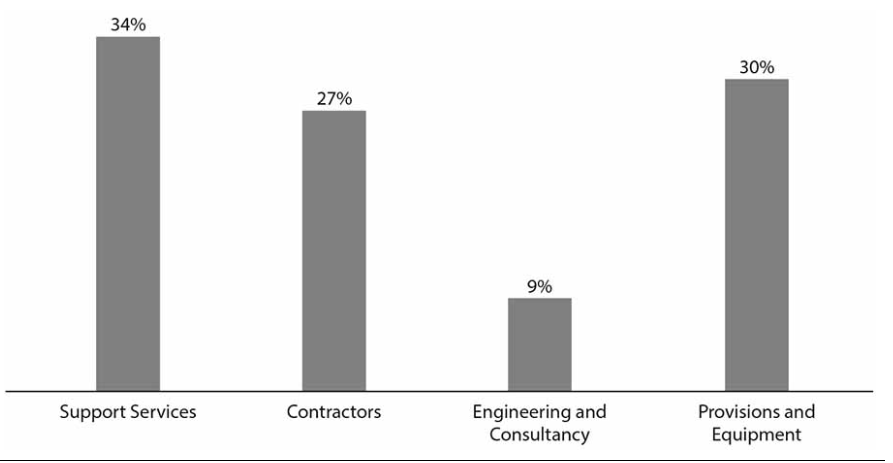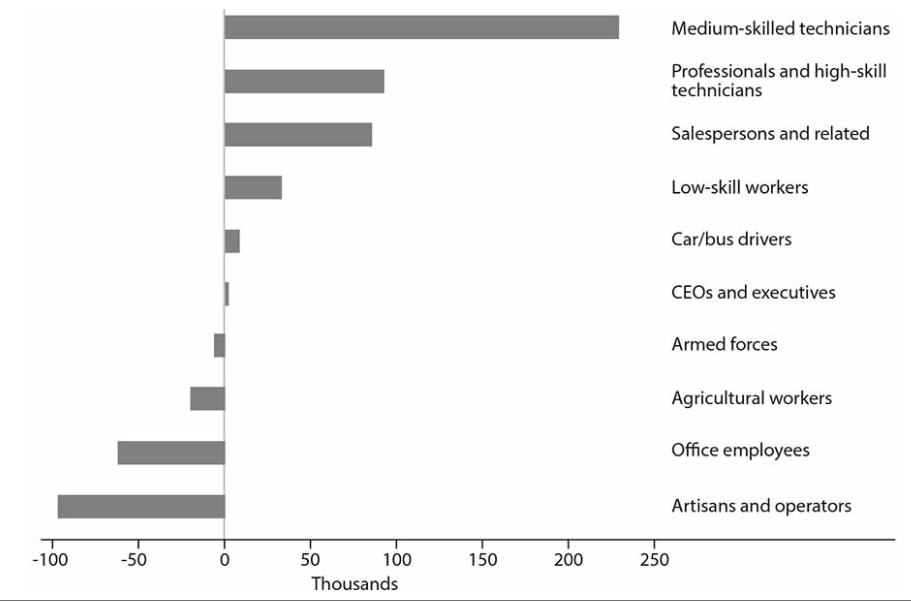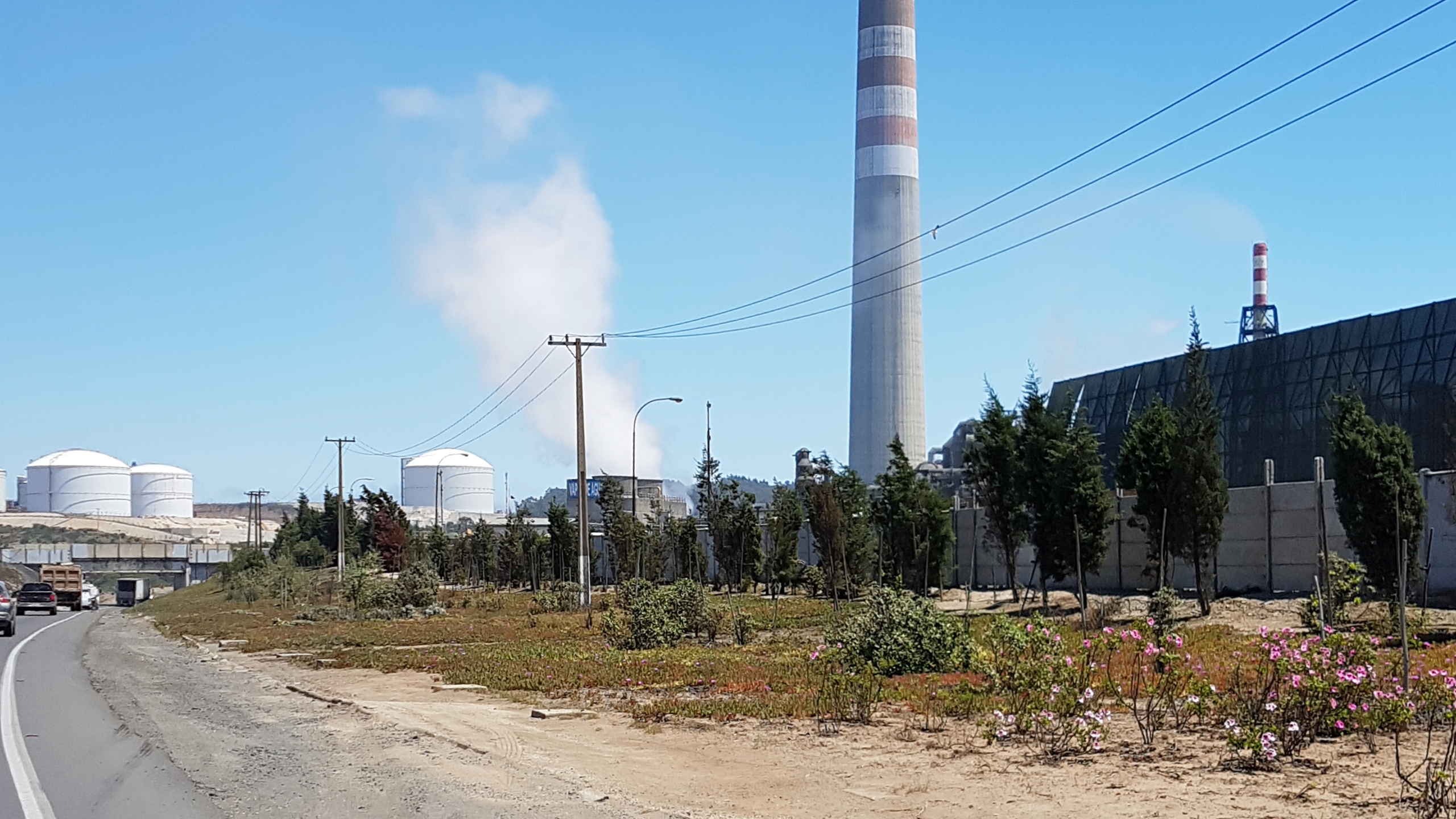EDITION: ECOLOGIES.
The urbanisation of the countryside enacted by the mining industry in Chile has produced devastating spatial, racial, and gendered polarisations.
We are very happy to be able to publish this edited extract from Martín Arboleda’s Planetary Mine: Territories of Extraction under Late Capitalism, published by Verso Books.
The site of extraction performs a double alchemical transformation. It remotely feeds the life of distant cities by supplying raw materials that will later become remodeled in urban form, assuming the social form of commodities. Yet spaces of extraction also constitute a locus of urbanization in themselves because they exert a definitive imprint upon the geography as a result of transfers of technology, flows of investment, shifting frameworks of interaction, and reconfiguration of the built environment. Ever since the dawn of modern technics, when the methods and ideals of mining became the chief pattern for industrial effort across the Western world, the whole animus and mindset of mining have expanded to revolutionize the entire economic and social organism in the rural lifeworld.1 In addition to its radical effects on the built environment, Mumford noted how the recklessly instrumental, “get-rich-quick” attitude of mining was systematically dismantling rural and premodern life and culture. In a similar vein, van der Pijl explains that the common characteristic of the imposition of the discipline of capital as it colonizes its constitutive outside resides in the breaking of the traditional mold of agrarian existence by commodification. This process, van der Pijl suggests, is most starkly manifested in the urbanization of the countryside.2
In contemporary spaces of extraction, the extension of the commodity relation—and hence of the spatiotemporality of capital—to rural life has assumed novel and ever more pervasive configurations. The evolution of the social and technical composition of labor in Latin America’s mining industry reflects the qualitative technological shifts that are intrinsic to the present configuration of the capitalist mode of production generally considered. Perhaps one of the most striking trends in the mining industry is its proclivity to mirror regimes of industrial organization implemented in the electronics industry, especially concerning the increasing relevance and participation of large transnational contractors in the core business. Increasing capitalization and technological sophistication triggered by declining mineral grades, coupled with financially driven managerial strategies to streamline and reduce operation costs systematically, has made the mining supply chain resemble the “modular” and “turnkey” production networks described in the previous chapter.3 Roughly put, this means that the mining industry has moved toward a combination of operational flexibility with vertical reintegration at the top of the supply chain. Although subcontracting has traditionally figured as a key component of mining activity, recent years have marked a shift toward greater reliance on large-scale contractors. Because of this novel organizational configuration, mining companies have been able to commodify labor-powers of heterogeneous complexity under a systemic industrial vision.
In 2004, the copper-mining industry in Chile advanced $5 billion in operational expenditures, of which $1.3 billion went to acquiring goods and inputs, and $1.7 billion to nonstrategic services.4 As industrialization in East Asia advanced in tandem with international demand for raw materials, mining companies became increasingly reliant on contractors. By 2013, mining corporations were allocating 60 percent of their operational costs for the acquisition of goods and services from third parties.5 Aside from being a relatively new sector in the Chilean economy, the contracting industry for mining has also become very dynamic. In 2010, there were 4,643 registered contractors, while in 2012 the figure rose to 5,998, which means that in only two years the sector grew by 29 percent.6 Besides its dynamism, the sheer size of the sector attests to the increasing relevance of contractors for the mining industry as a whole. In 2012, the sector accounted for 7.4 percent of Chile’s GDP, while the mining industry as a whole accounted for 12 percent.7 As of 2012, contractors employed 712,697 laborers under direct working contract, equivalent to 10 percent of Chile’s working population.8
The tasks initially outsourced in the mining industry were labor-intensive and marginal to the core operation, such as catering, hostels, and shaft sinking, but gradually began to include more complex services, such as mineral forecasting, geological modeling, and engineering. The trend toward a larger degree of diversification in services provided seems to have taken off in the South African mining industry during the 1990s, when whole shafts began to be outsourced to third parties.9 In Chile, this trend has evolved to the extent that large transnational corporations now figure among the key actors in the contracting sector for mining. Komatsu, Siemens, and Finning Cat are among the companies that commonly operate alongside extractive corporations in shafts, pits, and industrial facilities for mineral processing.10 The distribution of the services outsourced to contractors illustrates the evolving technical composition of labor in the extractive industries. Labor-intensive tasks such as transport, catering, and security constitute the largest percentage of services provided. The more complex, capital-intensive tasks, such as construction, mechanical engineering, industrial and electrical equipment, drilling, mineral crushing, explosives, and lab analysis, account for only 9 percent of outsourced services (see figure 1).

These figures reveal a trend that is not particular to the mining industry but symptomatic of an overall shift in global labor organization, where the tendency toward automation unfolds alongside internal polarization between the various organs of the collective laborer in accordance with their productive attributes. High-skill services such as engineering, consultancy, and lab analysis are contingent upon the expansion of the productive capacities of a segment of the workforce, so the core operations of the mine tend to be carried out by a clique of well-remunerated and skilled wage-laborers. As mines tend to be geographically remote from cities, this “privileged” organ of the collective laborer is, almost without exception, composed of city dwellers with specialized academic training and no connection with the sites of extraction. As an official of Codelco remarked,
The new generations of engineers and technicians do not want to spend 12 hours a day stuck in the dirty, gruesome environment of a mining shaft or pit. They are “technological by nature,” and so they prefer to operate the mine from remote locations, using joysticks and digital platforms.11
The more specialized the worker, the farther away she generally lives from the extraction site. The most qualified engineers usually live in Santiago or other Latin American capitals and commute to extraction sites when required.
When these engineers visit the sites, Merchant notes, they stay in “lavish base camps” akin to “a tiny five-star hotel with ten or so rooms and a private chef plunked down in the weird alien desert.”12 The wealthy and extravagant lifestyles of mining engineers are perhaps nothing particularly specific to the twenty-first century. As Gray Brechin shows, the profession of mining engineering acquired a heroic, almost evangelical stature following the wave of technological innovation and mechanization tied to the introduction of the internal-combustion engine in the late nineteenth century.13 The mining engineer of earlier phases of mechanization, according to Brechin, was “tough yet refined, moving as easily amid the smelters of South Africa’s Rand and Butte … as in the palaces and bourses of the European capitals or the New York Stock Exchange.”14 For an ambitious young man in that day and age, Brechin considers, “a mining career offered the chance to win the wealth capable of propelling him into the same Olympian caste as the men and women for whom he worked.”15
Santiago de Chile, in particular, has become one of the most attractive cities in Latin America for the highly skilled workers, financiers, and executive personnel of the mining industry. Many transnational firms and contractors have settled in this bustling, modern city. According to De Mattos, the factors that have made Santiago an attractive hub for transnational corporate networks are its communications/transport infrastructures, its physical proximity to other firms, the availability of a wide array of production services, its highly diverse and qualified labor markets, and relatively diversified industrial base.16 As a result of the urban modernization that followed Chile’s neoliberal transformations after the 1970s, De Mattos explains, Santiago became increasingly positioned as an organizational hub for global economic operations, similar to other “global cities.”17 According to Riffo Pérez, Santiago is where the firms and economic groups that plan, coordinate, and control Chile’s export-oriented sectors have established their head-quarters.18 Perhaps mirroring the growing outsourcing of services and tasks in the mining industry, the service sector that has displayed the fastest growth rates in Santiago. In general terms, it has been argued that Santiago’s introduction to transnational corporate networks has upgraded the technical composition of the local workforce.19 Not surprisingly, then 62 per cent of the mining industry contractors are based in Santiago.20

For its own self-preservation, Mandel explains, capital could never afford to transform all workers into scientists, just as it could not transform all production into automation.21 Thus, concomitant with the expanded forms of productive subjectivity required to operate highly sophisticated mechanized systems of extraction and mineral processing, the rest of the mining supply chain revolves around degrading types of labor-power. As in the electronics industry,22 this social process has superimposed the formal mediations of citizenship, race, gender, and ethnicity upon the material differentiations of fractions of the mining proletariat. The degraded forms of labor-power that either act as appendages of industrial systems or perform manual tasks such as cleaning or cooking constitute the mass of the workforce. Their territorial distribution often conflicts with their social composition, as the middle tier of this workforce comes from other places across Chile and sometimes even from neighboring countries. Since mining and energy projects tend to require large amounts of unskilled industrial labor of this sort to work temporary “seven by seven” shifts (seven days on site, seven days away), mining towns have received large numbers of floating populations.23
These temporary workers—informally called faeneros by local communities—come from various locations on a temporary basis, have no attachments to the host town, are usually underpaid, and face overcrowded accommodations…Because these towns tend to be intensive on energy, logistics, and mining infrastructure, they are usually burdened by high levels of air, water, and noise pollution, a feature that dramatically impacts public health and the quality of life more generally. Informally referred to in Chile as zonas de sacrificio (sacrifice zones), these are the built environments that have come to support the modalities of commodification of labor-power corresponding to the organs of the collective laborer that act as the appendage of heavy infrastructures and systems of machinery. Practices of outsourcing and subcontracting are predominant among these segments of the workforce, increasing dramatically during recent years. In the mining industry, as in many other industries, temporary contracts have become a breeding ground for deskilling and income inequality. As Cademartori illustrates, in one of the largest mining companies operating in Chile, workers directly employed in the firm earn on average 254 per cent more than those hired by external and local contractors.24
Finally, acting as the lower tier in the mining workforce is a further organ of the collective laborer in charge of nonmechanized/manual tasks, which can be considered to constitute an “external department” of large-scale industry proper, as discussed in the previous section. This lower rank encompasses a wide array of services that include formal activities such as cleaning, catering, and security, as well as less formal ones such as street vending, payday lending, tourism, and sex work. As Charmaine Chua observes, the sophisticated sociotechnical basis of contemporary logistics is riddled by contradictions similar to those of the mining industry. Lurking behind the homogenizing fantasies of the kinetic, clockwork mechanical apparatuses of Chinese ports, she points out, there is a shadow economy of precarious laborers tasked with pumping dirty fuel out of tanks, collecting accumulated garbage and scrap, and cleaning used pipes.
In the Chilean mining industry, the degraded organs of the collective laborer are internally polarized and fragmented in terms of the productive attributes that capital demands from each category of labor-power. They are also deeply differentiated according to gender and ethnoracial attributes. In general, and because Chile has developed relatively homogeneous processes of mestizaje when compared to other Latin American countries (such as Colombia, Venezuela, and Brazil), the question of race has only recently aroused interest from academics and the wider public. Although there are no comprehensive studies addressing the racialization of work in the mining industry of Chile or Latin America in general, evidence from South Africa suggests that mining corporations have tended to systematically introduce de facto “color codes” for different categories of labor-power.25 This, it is argued, constitutes a managerial strategy to press down wages, fragment the workforce, and extend the discipline of capital over labor.26 As Lüthje et al. illustrate,27 ethnoracial and cultural attributes are also a central element in segmenting workforces across the electronics-manufacturing industry. According to these authors, large manufacturing contractors tend to hire workers who are migrants and racial minorities for low wage and insecure jobs. In most low-cost locations, they point out, “the employment of a workforce with these characteristics is possible because of complex systems of labor migration and ethnic, religious, and cultural division and discrimination.”28
Seen in this light, the patterns of labor differentiation taking place in the mining industry resemble those being systematically implemented across the large global contractors of the electronics industry. In most cases, the difference in pay and working conditions between manufacturing workers and engineers, technical and administrative personnel, can be gigantic.29 In the words of Lüthje and coauthors, this “reflects the companies’ efforts to attract engineering and technical talent while squeezing labor costs in manufacturing.”30 In the mining industry, this uneven distribution of productive capacities and attributes is not engendered in a vacuum but forged through diverse mechanisms and strategies of violence, enclosure, racialization, labor casualization, and displacement. In this sense, the mining proletariat is a microcosm of a process that encompasses the whole globe and consists in the systematic incorporation of erstwhile self-subsisting peasantries and other agrarian and indigenous communities into the polarizing industrial organism that is the global collective laborer.
-
Lewis Mumford. [1934]. 2010. Technics and Civilization. Chicago: University of Chicago Press. ↩
-
Kees van der Pijl. 2001. “International Relations and Capitalist Discipline”. In edited by Robert Albritton, Makoto Itoh, Richard Westra, and Alan Zuege. Phases of Capitalist Development: Booms, Crises, and Globalizations. London: Palgrave McMillan. ↩
-
Timothy Sturgeon. 2002. “Modular Production Networks: A New American Model of Industrial Organization”. In Industrial and Corporate Change 11, no. 3: pp. 451–96; Guido Starosta. 2010. “The Outsourcing of Manufacturing and the Rise of Giant Global Contractors: A Marxian Approach to Some Recent Transformations of Global Value Chains”. In New Political Economy, 15, Issue 4. pp. 543-63. ↩
-
COCHILCO. 2005. Oportunidades de Negocios para Proveedores de Bienes, Insumos y Servicios Mineros en Chile. Santiago: COCHILCO. p. 268. figure 5. ↩
-
Innovum/Fundación Chile. 2014. Proveedores de la minería chilena: Estudio de caracterización 2014. Santiago: Fundación Chile. p. 2. ↩
-
Ibid. ↩
-
Ibid. p. 2, 11. ↩
-
Fundación Chile. 2012. Proveedores de la minería chilena: Estudio de caracterización 2012. Santiago: Fundación Chile. p. 18. ↩
-
Bridget Kenny and Andries Bezuidenhout. 1999. “Contracting, Complexity and Control: An Overview of the Changing Nature of Subcontracting in the South African Mining Industry”. In Journal of the South African Institute of Mining and Metallurgy (July/August). pp. 185–92. ↩
-
Innovum/Fundación Chile. Proveedores, 2014. ↩
-
Interview with a Chilean mining executive, January 10, 2017. ↩
-
Brian Merchant. 2017. The One Device: The Secret History of the iPhone. London: Random House. p. 114. ↩
-
Gray Brechin. 2006. Imperial San Francisco: Urban Power, Earthly Ruin. Berkeley: University of California Press. ↩
-
Ibid. p. 53. ↩
-
Ibid. ↩
-
Carlos de Mattos. 2005. “Santiago de Chile: metamorfosis bajo un nuevo impulso de modernización capitalista”. In edited by Carlos de Mattos, Maria Elena Ducci, Alfredo Rodrríguez and Gloria Yañez Warner. Santiago en la globalización ¿Una nueva ciudad?. Santiago. Ediciones Sur. ↩
-
Ibid. ↩
-
Luis Riffo Pérez. “Los impactos de globalización sobre los mercados de trabajo metropolitanos: el caso de Santiago de Chile en la década de los noventa”. In Edited by De Mattos et al. Santiago en la globalización. ↩
-
Ibid., figure 6. ↩
-
Innovum/Fundación Chile. Proveedores, 2014_ p. 10. ↩
-
Ernest Mandel. [1972]. 1976. Late Capitalism. London: NLB. p. 208. ↩
-
Starosta. “Outsourcing of Manufacturing.” ↩
-
Martín Arboleda. 2016. “In the Nature of the Non-City: Expanded Infrastructural Networks and the Political Ecology of Planetary Urbanisation”. Antipode 48, no. 2. p. 233–51. ↩
-
Jan José Cademartori. 2010. Inversión extranjera en el desarrollo de la región minera de Antofagasta: historia y perspectivas. Antofagasta, Chile: Universidad Católica del Norte. p. 259. ↩
-
Kenny and Bezuidenhout. “Contracting, Complexity and Control”. ↩
-
Ibid. ↩
-
Boy Lüthje, Stefanie Hürtgen, Peter Pawlicki, and Martina Sproll. 2013. From Silicon Valley to Shenzhen: Global Production and Work in the IT Industry. Lanham, MD: Rowman and Littlefield. ↩
-
Ibid. p. 155 ↩
-
Ibid. ↩
-
Ibid. p. 227-8. ↩
